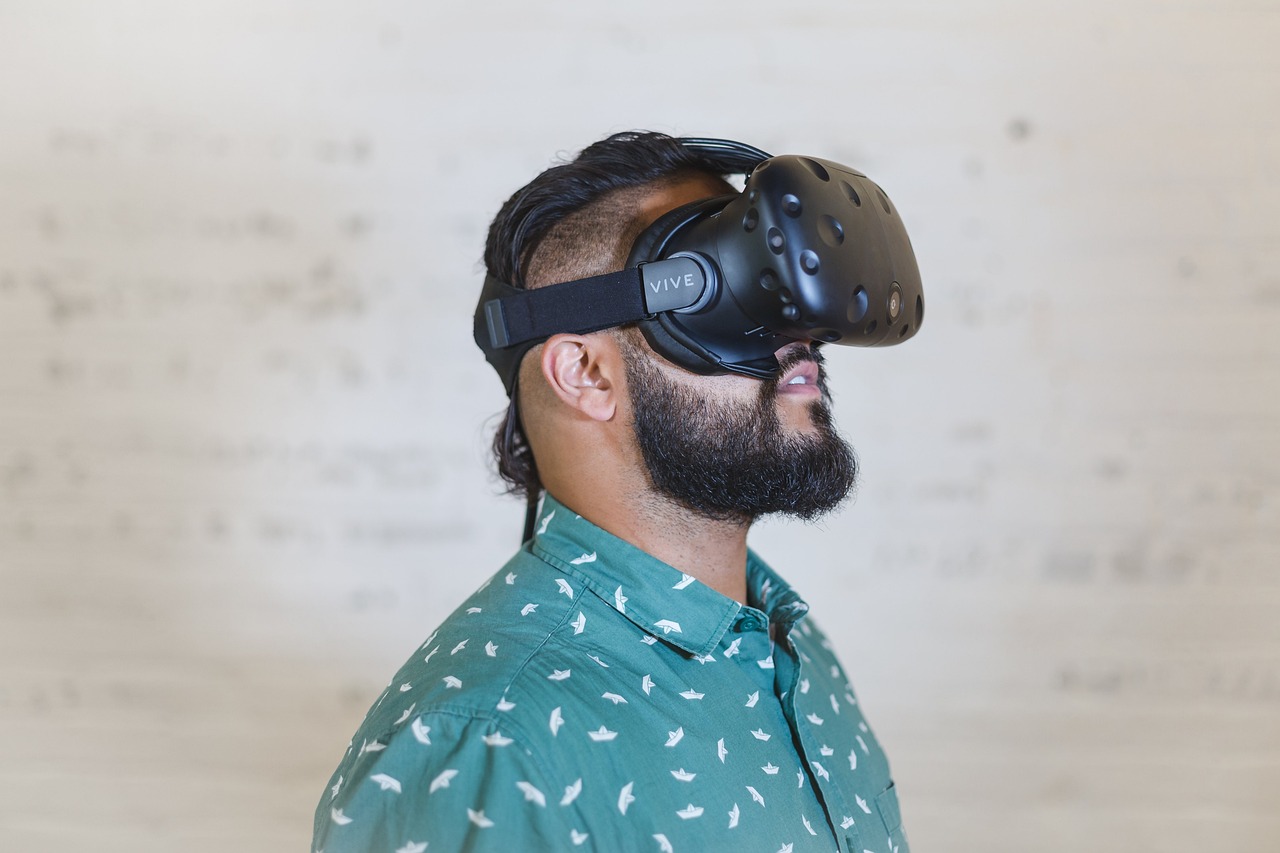The Future of Erectile Dysfunction Treatment: Virtual Reality as an Effective Therapy Supplement

Erectile dysfunction (ED) is an issue affecting millions of men worldwide and can significantly impact their quality of life. Traditional treatment methods, such as pharmacological agents, psychotherapy, and mechanical aids, have proven effective. However, new technologies are bringing revolutionary possibilities. One of these innovations is virtual reality (VR), which has the potential to become a significant tool in the treatment of erectile dysfunction.
How Virtual Reality Works
Virtual reality is a technology that allows users to enter a computer-generated three-dimensional environment using special glasses and often other sensors and controllers. VR can simulate various situations and environments, providing users with a highly realistic experience. This technological advancement is used not only in the entertainment industry but also in medicine, psychology, and therapy.
How Would Erectile Dysfunction Treatment Using Virtual Reality Work?
Treating erectile dysfunction (ED) with virtual reality (VR) could involve several different methods and techniques that combine VR technology with traditional therapeutic approaches. Here are some examples of how VR could be used in treating ED:
1.Exposure to Stressful Situations: VR could simulate various situations that cause anxiety or stress, common psychological factors contributing to ED. This technique is called exposure and desensitization.
- Exposure in a Safe Environment: The patient would be exposed to simulated situations that may include intimate scenarios or romantic encounters in a safe and controlled environment.
- Gradual Increase in Intensity: Situations would become progressively more challenging, helping the patient overcome anxiety and build confidence.
- Realistic Simulations: With advanced graphics and interactivity, these situations can be very realistic, helping the patient better prepare for real-life situations.
2. Biofeedback and VR: Combining VR and biofeedback can provide valuable information about the patient’s physiological responses and help them manage these responses better.
- Monitoring Physiological Responses: Using wearable devices, a VR application can monitor heart rate, stress levels, and other physiological responses during simulated situations.
- Immediate Feedback: The patient can receive immediate feedback on their reactions and learn techniques to manage and improve them.
3. Sexual Education and Practice: VR can also be an effective tool for sexual education and practice.
- Interactive Learning: Patients and their partners can use VR for interactive learning about sexual anatomy, techniques, and communication.
- Simulation and Training: VR can provide a safe environment to practice various techniques and scenarios, improving sexual skills and confidence.
4. Relaxation and Meditation: VR can be used to induce relaxation and meditative states, which can help reduce stress and anxiety, often contributing to ED.
- Virtual Relaxation Environments: The patient can be immersed in calm and relaxing environments, such as beaches, forests, or mountain landscapes, promoting relaxation and stress reduction.
- Guided Meditations: VR applications can offer guided meditations and breathing exercises, which can help improve overall mental well-being.
Implementation and Studies on VR and Erectile Dysfunction Treatment
ED treatment using VR could be implemented through specialized clinics or therapeutic centers offering VR therapy sessions led by trained professionals. Patients could also use VR applications at home as a supplement to professional therapy.
Although the use of virtual reality in treating erectile dysfunction is relatively new, research and development in this field are rapidly advancing. Several studies have already shown promising results in using VR for treating various psychological disorders, and similar potential is expected in ED treatment.
The study “The Use of Virtual Reality in the Treatment of Anxiety Disorders” (2014) led by Freeman et al. showed that VR could be effective in treating various anxiety disorders through exposure and desensitization. This approach can be applied to ED treatment, where psychological factors like anxiety and fear of failure play a significant role. The study suggests that VR can help men with ED overcome psychological barriers and improve their sexual function.
The study “Virtual Reality Assisted Cognitive Behavioral Therapy for Sexual Dysfunction: A Pilot Study” (2020) led by Wiederhold et al. examined the effectiveness of VR-assisted cognitive-behavioral therapy (CBT) in treating sexual dysfunctions, including ED. The results indicated that VR could be an effective complement to traditional therapy.
In the study “Biofeedback and Virtual Reality: A New Approach to Psychotherapy for Sexual Dysfunctions” (2019) led by Garcia et al., it was shown that combining biofeedback and VR could provide useful feedback and help patients better understand and manage their physiological responses.
Challenges of Using Virtual Reality in Erectile Dysfunction Treatment
While virtual reality (VR) holds great potential for treating erectile dysfunction (ED), several challenges exist in its practical implementation. Some of the main issues are:
- Technological Limitations: Effective VR therapy requires high-quality hardware and software. Low-quality VR devices can lead to ineffective therapies and reduced realism, affecting outcomes. Delays, glitches, or other technical issues can disrupt the therapeutic process and reduce the effectiveness of treatment.
- Costs: High-quality VR devices and software can be expensive, posing a financial barrier for patients and healthcare facilities. Regular maintenance and updates of VR devices and software can also be costly and time-consuming.
- Patient Acceptance: Not all patients are experienced with modern technologies, and some may struggle to adapt to VR therapy. Some patients may feel discomfort or anxiety when using VR, which can affect their ability to fully engage in therapy.
- Ethical and Security Issues: Collecting and storing sensitive health data within VR therapy raises questions about privacy and data security. The use of VR in treatment can also raise ethical questions, such as ensuring that therapy is conducted ethically and with respect for patient dignity.
- Professional Training and Education: Therapists must be properly trained in using VR technologies and methodologies specific to VR therapy. This requires time and resources. Given the rapid development of VR technologies, therapists must be continuously educated and kept up-to-date with advancements in the field.
The Development of Sexual Content in VR and Its Potential Impacts on Erectile Dysfunction
Sexual content in virtual reality (VR) is a relatively new phenomenon, bringing new possibilities and concerns about its impact on health, including erectile dysfunction. What are the potential impacts on erectile dysfunction?
- Desensitization: Frequent viewing of highly intense sexual scenes in VR can lead to desensitization, meaning real-life sexual experiences may seem less exciting. This can contribute to erection problems.
- Increased Expectations: VR pornography can create unrealistic expectations regarding sexual performance and physical appearance, leading to reduced self-esteem and stress, factors associated with erectile dysfunction.
- Addiction: Like traditional pornography, VR pornography can be addictive. This can lead individuals to prefer virtual experiences over real ones, negatively affecting their sexual life.
Conclusion
Virtual reality represents an innovative and promising technology with the potential to significantly change the approach to treating erectile dysfunction. With its ability to provide realistic and controlled environments for therapy, education, and communication, VR can offer new possibilities for improving men’s sexual health and well-being. As this technology continues to evolve and improve, we can expect even broader and more effective use in healthcare and erectile dysfunction treatment. As technology continues to develop, we can anticipate more innovative applications and effective therapeutic approaches to help men overcome their health issues and improve their quality of life.
Related articles









